Golf
45 holes of championship golf designed by Pete Dye and Jack Nicklaus. Whether it's casual play or tournament play, golf is a major year-round activity at the Country Club of Landfall.
A taste of what our golf program offers:
-
Men's and women's golf associations with one day a week tournament schedule
-
Several interclub matches
-
Growing young executive group with regularly scheduled "nine & dine" outings
-
Major Club Championships for men, women, couples, and juniors
-
Golf events planned by the Country Club of Landfall Golf Committee
-
Golf instruction for all skill levels
-
So much more
From beginners to scratch golfers, we have tailored instructional programming to meet all of your golf game needs.
-
Private lessons
-
On-course lessons
-
Weekly clinics for different associations
-
Putting, short game, and full swing clinics
-
Weekly ladies' beginner clinics
-
Corporate clinics with video technique analysis
-
20 golf tournaments a year for the competitive golfer
If your idea of a wonderful lifestyle includes playing outstanding courses in a beautiful setting 12 months a year, then the Country Club of Landfall is the place for you!
Click here for the Dye Course Scorecard
Click here for the Nicklaus Course Scorecard
Dye Course Tour
Dye Course Scorecard (PDF)
Hole # 1
Par 4
| Tees | Yardage |
|---|---|
|
Black
|
378 |
|
Blue
|
351 |
|
White
|
317 |
|
Gold
|
282 |
|
Red
|
274 |

| Tees | Yardage |
|---|---|
|
Black
|
135 |
|
Blue
|
122 |
|
White
|
111 |
|
Gold
|
103 |
|
Red
|
68 |
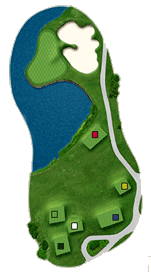
| Tees | Yardage |
|---|---|
|
Black
|
467 |
|
Blue
|
425 |
|
White
|
395 |
|
Gold
|
340 |
|
Red
|
273 |

| Tees | Yardage |
|---|---|
|
Black
|
521 |
|
Blue
|
507 |
|
White
|
496 |
|
Gold
|
475 |
|
Red
|
400 |

| Tees | Yardage |
|---|---|
|
Black
|
401 |
|
Blue
|
386 |
|
White
|
361 |
|
Gold
|
334 |
|
Red
|
280 |

| Tees | Yardage |
|---|---|
|
Black
|
533 |
|
Blue
|
515 |
|
White
|
485 |
|
Gold
|
412 |
|
Red
|
405 |

| Tees | Yardage |
|---|---|
|
Black
|
433 |
|
Blue
|
399 |
|
White
|
377 |
|
Gold
|
309 |
|
Red
|
262 |

| Tees | Yardage |
|---|---|
|
Black
|
209 |
|
Blue
|
193 |
|
White
|
165 |
|
Gold
|
139 |
|
Red
|
123 |

| Tees | Yardage |
|---|---|
|
Black
|
431 |
|
Blue
|
421 |
|
White
|
386 |
|
Gold
|
367 |
|
Red
|
323 |

| Tees | Yardage |
|---|---|
|
Black
|
405 |
|
Blue
|
389 |
|
White
|
330 |
|
Gold
|
292 |
|
Red
|
268 |
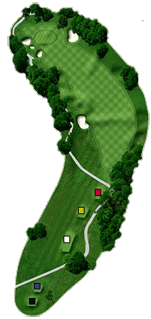
| Tees | Yardage |
|---|---|
|
Black
|
206 |
|
Blue
|
183 |
|
White
|
166 |
|
Gold
|
153 |
|
Red
|
143 |

| Tees | Yardage |
|---|---|
|
Black
|
476 |
|
Blue
|
437 |
|
White
|
390 |
|
Gold
|
330 |
|
Red
|
320 |

| Tees | Yardage |
|---|---|
|
Black
|
339 |
|
Blue
|
325 |
|
White
|
292 |
|
Gold
|
287 |
|
Red
|
233 |

| Tees | Yardage |
|---|---|
|
Black
|
196 |
|
Blue
|
175 |
|
White
|
156 |
|
Gold
|
143 |
|
Red
|
104 |

| Tees | Yardage |
|---|---|
|
Black
|
460 |
|
Blue
|
446 |
|
White
|
385 |
|
Gold
|
327 |
|
Red
|
314 |

| Tees | Yardage |
|---|---|
|
Black
|
505 |
|
Blue
|
489 |
|
White
|
460 |
|
Gold
|
449 |
|
Red
|
398 |

Marsh Course Tour
| Tees | Yardage |
|---|---|
|
Black
|
377 |
|
Blue
|
353 |
|
White
|
325 |
|
Gold
|
295 |
|
Red
|
256 |
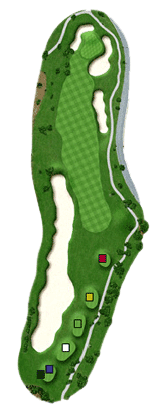
| Tees | Yardage |
|---|---|
|
Black
|
199 |
|
Blue
|
170 |
|
White
|
157 |
|
Gold
|
123 |
|
Red
|
114 |

| Tees | Yardage |
|---|---|
|
Black
|
471 |
|
Blue
|
415 |
|
White
|
379 |
|
Gold
|
344 |
|
Red
|
306 |

| Tees | Yardage |
|---|---|
|
Black
|
425 |
|
Blue
|
410 |
|
White
|
390 |
|
Gold
|
305 |
|
Red
|
297 |

| Tees | Yardage |
|---|---|
|
Black
|
535 |
|
Blue
|
514 |
|
White
|
498 |
|
Gold
|
463 |
|
Red
|
422 |

| Tees | Yardage |
|---|---|
|
Black
|
191 |
|
Blue
|
175 |
|
White
|
165 |
|
Gold
|
145 |
|
Red
|
90 |

| Tees | Yardage |
|---|---|
|
Black
|
414 |
|
Blue
|
387 |
|
White
|
348 |
|
Gold
|
289 |
|
Red
|
275 |

| Tees | Yardage |
|---|---|
|
Black
|
507 |
|
Blue
|
483 |
|
White
|
463 |
|
Gold
|
451 |
|
Red
|
429 |

| Tees | Yardage |
|---|---|
|
Black
|
431 |
|
Blue
|
409 |
|
White
|
383 |
|
Gold
|
356 |
|
Red
|
285 |

Ocean Course Tour
| Tees | Yardage |
|---|---|
|
Black
|
537 |
|
Blue
|
527 |
|
White
|
486 |
|
Gold
|
460 |
|
Red
|
402 |

| Tees | Yardage |
|---|---|
|
Black
|
444 |
|
Blue
|
419 |
|
White
|
387 |
|
Gold
|
363 |
|
Red
|
309 |

| Tees | Yardage |
|---|---|
|
Black
|
436 |
|
Blue
|
406 |
|
White
|
381 |
|
Gold
|
348 |
|
Red
|
330 |

| Tees | Yardage |
|---|---|
|
Black
|
148 |
|
Blue
|
148 |
|
White
|
125 |
|
Gold
|
99 |
|
Red
|
77 |

| Tees | Yardage |
|---|---|
|
Black
|
412 |
|
Blue
|
358 |
|
White
|
330 |
|
Gold
|
271 |
|
Red
|
260 |

| Tees | Yardage |
|---|---|
|
Black
|
229 |
|
Blue
|
209 |
|
White
|
188 |
|
Gold
|
147 |
|
Red
|
111 |

| Tees | Yardage |
|---|---|
|
Black
|
480 |
|
Blue
|
480 |
|
White
|
461 |
|
Gold
|
439 |
|
Red
|
365 |

| Tees | Yardage |
|---|---|
|
Black
|
342 |
|
Blue
|
319 |
|
White
|
310 |
|
Gold
|
298 |
|
Red
|
252 |

| Tees | Yardage |
|---|---|
|
Black
|
445 |
|
Blue
|
416 |
|
White
|
356 |
|
Gold
|
329 |
|
Red
|
296 |

Pines Course Tour
| Tees | Yardage |
|---|---|
|
Black
|
465 |
|
Blue
|
424 |
|
White
|
414 |
|
Gold
|
368 |
|
Red
|
323 |

| Tees | Yardage |
|---|---|
|
Black
|
540 |
|
Blue
|
507 |
|
White
|
497 |
|
Gold
|
476 |
|
Red
|
449 |

| Tees | Yardage |
|---|---|
|
Black
|
163 |
|
Blue
|
163 |
|
White
|
150 |
|
Gold
|
135 |
|
Red
|
115 |

| Tees | Yardage |
|---|---|
|
Black
|
349 |
|
Blue
|
318 |
|
White
|
312 |
|
Gold
|
301 |
|
Red
|
239 |

| Tees | Yardage |
|---|---|
|
Black
|
429 |
|
Blue
|
400 |
|
White
|
384 |
|
Gold
|
338 |
|
Red
|
300 |

| Tees | Yardage |
|---|---|
|
Black
|
203 |
|
Blue
|
187 |
|
White
|
163 |
|
Gold
|
155 |
|
Red
|
134 |
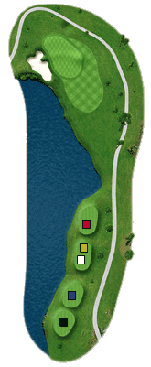
| Tees | Yardage |
|---|---|
|
Black
|
357 |
|
Blue
|
357 |
|
White
|
335 |
|
Gold
|
309 |
|
Red
|
231 |

| Tees | Yardage |
|---|---|
|
Black
|
513 |
|
Blue
|
511 |
|
White
|
486 |
|
Gold
|
400 |
|
Red
|
396 |

| Tees | Yardage |
|---|---|
|
Black
|
433 |
|
Blue
|
413 |
|
White
|
388 |
|
Gold
|
336 |
|
Red
|
277 |
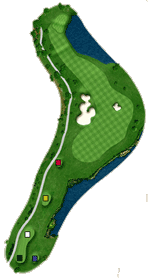
Appropriate Golf Attire
Golf Attire
The Staff is not permitted to allow Members or their guests on the golf facilities who are not appropriately attired.
-
Proper golf attire must be worn on the golf courses and practice facilities. Sweat suits, cut-off jeans, denim jeans, athletic shorts, and all cargo attire (shorts and pants) are not considered proper attire. All men’s shirts must have sleeves and collars, turtlenecks or be a mock-neck shirt designed for golf. Shirttails must be kept tucked into the golfer’s shorts or trousers.
-
Ladies’ shirts and tops must be designed and tailored for golf.
-
Metal and ceramic spikes are not permitted anywhere at the Club.
-
Leggings, unless under a skort or shorts, are not allowed




